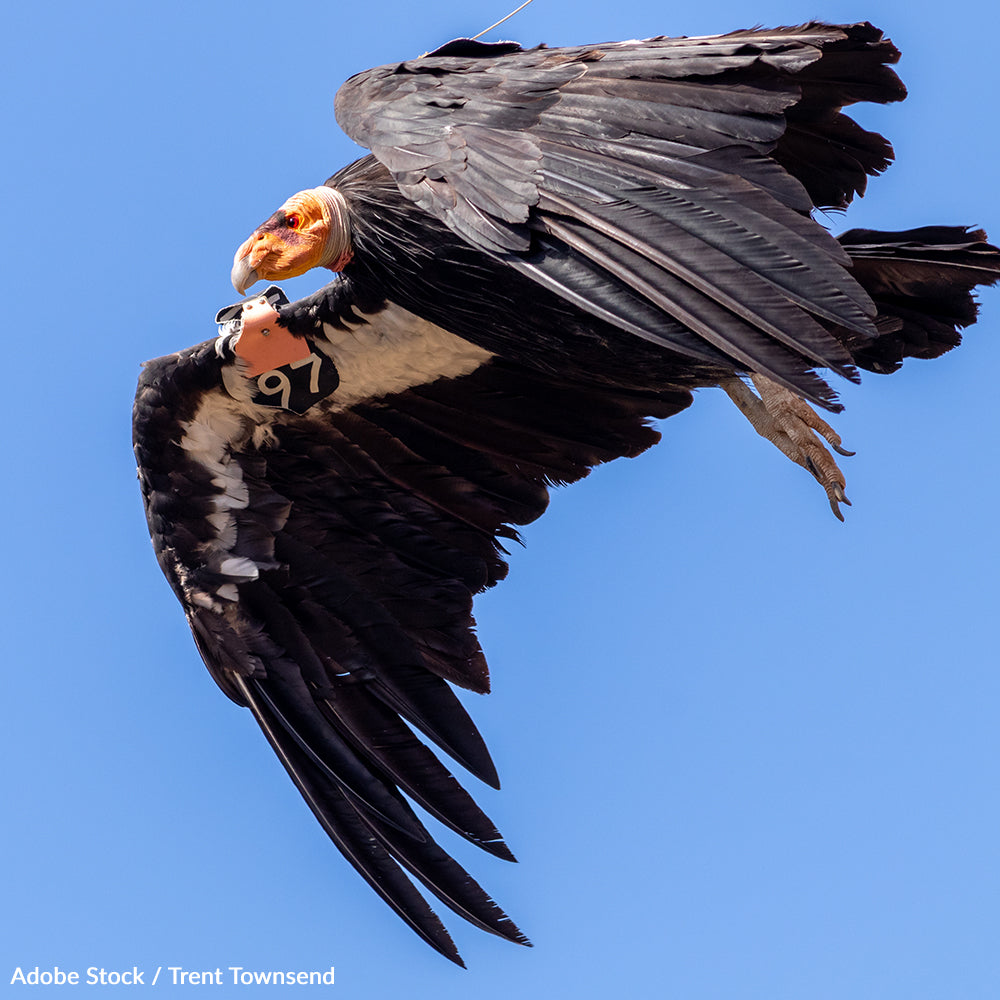Save the California Condor from Lead Poisoning
Final signature count: 16,038
16,038 signatures toward our 30,000 goal
Sponsor: The Animal Rescue Site
The California condor could go extinct unless hunters abandon lead-based ammunition when hunting in their habitat. Take action!

The California condor is one of the largest flying birds in North America, with a wingspan that stretches nearly 10 feet, helping it reach speeds of up to 50 miles per hour1. This majestic bird once ruled the skies of the Pacific coast, but far fewer remain alive today.
Poaching, habitat destruction, lead poisoning and the pervasive California condor louse have all contributed to the California condor’s disappearance2. The bird became extinct from the wild in 1987, when there were only 22 California condors left on the planet.
That’s when the US government ordered the capture of all 27 remaining wild birds, which were bred in captivity at the San Diego Zoo and the Los Angeles Zoo3.
Conservationists treated all the condors with a pesticide to kill the California condor louse which has since been eradicated in an instance of conservation-induced extinction4.
In the early 1990s, some condors were reintroduced into the wild. Today, the bird inhabits range in parts of California and Utah in the US and Baja California in Mexico5.
Though this bird is coming back from the brink, the California condor is not yet safe. A significant percentage of all released condors have died or been returned to captivity66.
Poisoning by ingestion of lead shot, scavenged along with carcasses left behind by hunters, is still one of the most widespread and preventable causes of condor deaths7.
California condors will fly up to 200 miles per day searching for carrion to eat. When those sources of food contain fragments of soft lead-core bullets, it creates a serious health risk for the condor. This threat is created any time a wounded animal escapes a hunt, gut-piles are left behind after a kill, or pest animals are shot and left for dead. Toxic lead accumulates in the bodies of the condors, and has caused the deaths of dozens of birds since reintroduction to the wild8.
Lead ammunition also poses health risks to people. Fragmented lead bullets can leave tiny particles in meat that humans eat. Studies show that even dust-sized particles of lead can infect a radius of 18 inches from the bullet wound9.
If there is anything that can be done to cave the California condor, leaving behind lead-based ammunition will make the biggest impact.
We must convince hunters in Arizona, California and Utah to voluntarily abandon lead-based ammunition when hunting in condor territory. That starts with making the change ourselves.
Sign the California Condor Pledge and let the world know you’re taking action to save these majestic birds from extinction!


